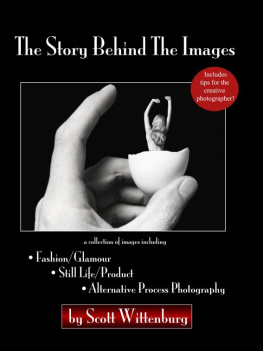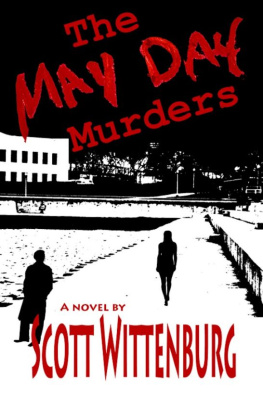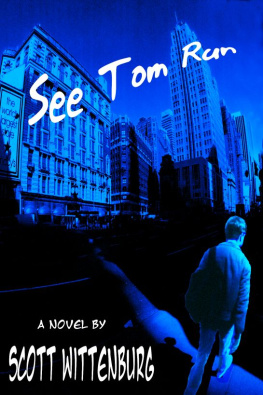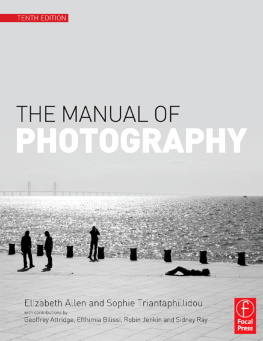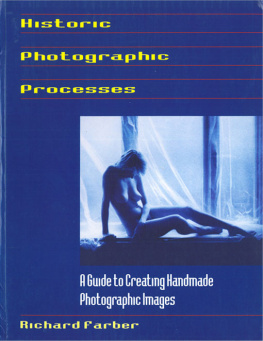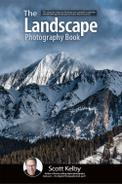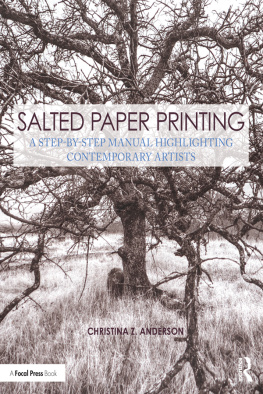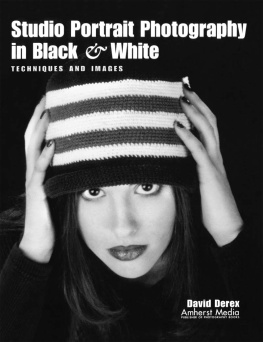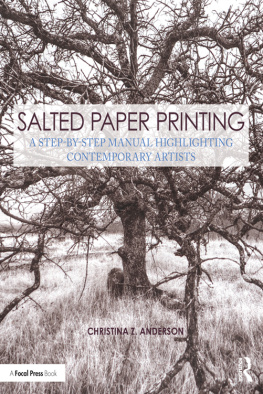The Story Behind The Images
by
Scott Wittenburg
2006 Scott Wittenburg
Smashwords Edition, License Notes
This ebook is licensed for your personalenjoyment only. This ebook may not be re-sold or given away toother people. If you would like to share this book with anotherperson, please purchase an additional copy for each recipient. Ifyoure reading this book and did not purchase it, or it was notpurchased for your use only, then please return to Smashwords.comand purchase your own copy. Thank you for respecting the hard workof this author.
Cover photos and design by ScottWittenburg.
All photographs and imagesin this publication are 2006 by Scott Wittenburg
For more information aboutthe author, please visit www.scottwittenburg.com
Contents
About the Author
Introduction
Fashion and Glamour
Still Life
Alternative Processes:
SX-70 Manipulations
Polaroid Image Transfers
Emulsion Lifts
Salt Prints
Cyanotypes
Infrared Photography
The How-To Section
Multiple Exposures using FilmRegistration
Multiple Exposures using NegativeSandwiching
Composite Imaging in Adobe Photoshop
Selective Coloring in Adobe Photoshop
Polaroid SX-70 Manipulations
Polaroid Image Transfers
Emulsion Lifts
Salt Prints
Cyanotypes
Infrared Photography
About the Author
Before becoming a professional photographer,Scott was an aspiring musician who moved from his hometown ofPortsmouth, Ohio to New York City in February, 1981. Once settledinto his new environment, he eventually formed a band called TheTickets and the fledgling new wave rock band began playing atseveral Manhattan showcase clubs including Great Gildersleeves, TheBitter End and Kenny's Castaways.
While playing in his band, Scott worked fulltime as a sales clerk at a photo supply store in Manhattans photodistrict in order to pay the bills. He was in contact with a bevyof professional photographers on a daily basis and in late 1984 wasoffered a job as a photographers assistant and studio manager byJim Stratos, a successful commercial photographer. Scott eagerlyturned in his two weeks notice and eventually began pursuing hisother passion in life besides rock and roll music: photography.
In August of 1985, Scott took the extensiveexperience he had gained with Stratos Photography and decided toventure out on his own. He signed a lease for loft space in lowerManhattan and established his own studio. His clients includedaspiring models, actors and musicians seeking publicity shots andportfolios. He also had a few commercial accounts for productphotography. It was during this period that he became his mostproductive as he struggled to make ends meet in a fiercelycompetitive market.
By 1987, Scott had growntired of the hustle and bustle of living in New York City. His bandhad disbanded, he had written his first novel, The Edge in his all-too-availablespare time and his photography business was not paying the bills.He moved back to his hometown in September, appreciative for therich experiences gained while living nearly seven years in the BigApple, but at the same time more than ready to lead a more normal,less hectic way of life.
In October of the same year, he moved toColumbus and resumed his photography business. In 1995, he decidedto return to college to get his BA in visual arts plus teachingcertification at Ohio Dominican University. He was hired as an artteacher at Upper Arlington High School in 1997, where he stillteaches advanced photography courses. He earned his MFA inphotography in 2000 from Antioch University.
Scott currently hosts apopular photography how-to podcast called Photography 101,available on iTunes and other podcast sites. He also teaches anonline course at Udemy.com called Photoshop 101. Besides his lovefor photography and teaching photography, Scott ardently pursueswriting fiction and to date has seven published novels to hiscredit: The Barcode Murders, Greshmere,The Collector, See Tom Run, The May Day Murders, KatherinesProphecy and TheEdge. The Story Behind The Images is hisfirst work of non-fiction.
More about Scott, hisphotography, novels and music can be found athttp://www.scottwittenburg.com
Introduction
My fascination with photography began when Iwas around twelve years old. I can still remember my first camera:a hard plastic Kodak Brownie Hawkeye with a shiny dome-shaped flashattachment. The magical ability of capturing a brief moment in timeon a piece of film was just one of many things that attracted me tophotography as a kid. There was always a special sense of adventurein loading a fresh roll of film into my Brownie in subdued lightthen heading off into the unknown in pursuit of something new tophotograph.
I have tried in hindsight to figure outexactly what it was about taking pictures that made me feel soabsolutely enthralled about the photographic process back then.Besides the adventure aspect, it also seemed like such a maturething for a young kid to be doing while the other kids wereknocking around a wiffle ball in their backyards. I mean this wasserious stuff! Add this to the fact that I was a hyper kid whohated sitting around with nothing to do and it isnt too hard torationalize why photography was such a great fit for me as ayoungster.
A long time has gone by since those childhooddays but I am every bit as fascinated by photography today as I wasback then. I still get excited waiting to see an image I shot whether it be on the LCD screen of my digital SLR, in a tray ofpaper developer, or after peeling apart a Polaroid instant print.The magic is still there, every bit as strong as it ever was.
Photography has been there for me through allof my life learning experiences: adolescence, high school, college,playing music in bands, my seven years living in New York City, mymarriage, etc, etc. Had I not had my camera along with me for theride throughout these experiences, they would not seem nearly asrich and meaningful as they seem to me now.
This book reflects my photographicexperiences over the last twenty years from when I began mycareer as a professional photographer in NYC in the mid-eighties tothe present. I decided to publish this book because I feel that Ihave something worth sharing that will (hopefully) be enjoyable forthe casual reader and informative for the aspiringphotographer.
I decided to narrow the genres of photographyI have been involved with down to three: fashion/glamour, stilllife/product and alternative processes. These are the ones that Ihave always been most passionate about. Weeding out the actualimages I wanted to use was by far the most daunting task of all, nothanks at all to my haphazard system of organization. Over theyears my images have been preserved in what can only be describedas organized chaos, with a few slide pages stored here, some of myblack and white prints stuffed into there, most of my negativesburied somewhere else, and organization nowhere!
Once I had the images picked out, I had todecide how to approach the actual manuscriptshould I simplypresent the images and let them speak for themselves or include asection on how I made this image, step-by-step, allowing theteacher in me to impart his knowledge?
I finally settled on a compromise of sorts:Let the images speak for themselves but add a brief dissertationfor each one plus a separate how-to section addressing some ofthe more challenging techniques I used. How well this format worksis at this point anyones guess.
So here it is, The Story Behind The Images . I hope you enjoy this book as much as I have enjoyedproducing it!
S.W. December, 2006
Fashion and Glamour
The majority of my work as a professionalphotographer has been in fashion and glamour photography. To me,fashion is not necessarily about trying to sell the latest clothingstyles of a particular generation nor is glamour necessarily whateveryone would call glamorous. Both terms are overused and Im notsure that anyone has ever offered a clear definition of either. Mypersonal feeling is that both genres involve a sense of attitudealong with an air of confidence and inner beauty.
Next page
